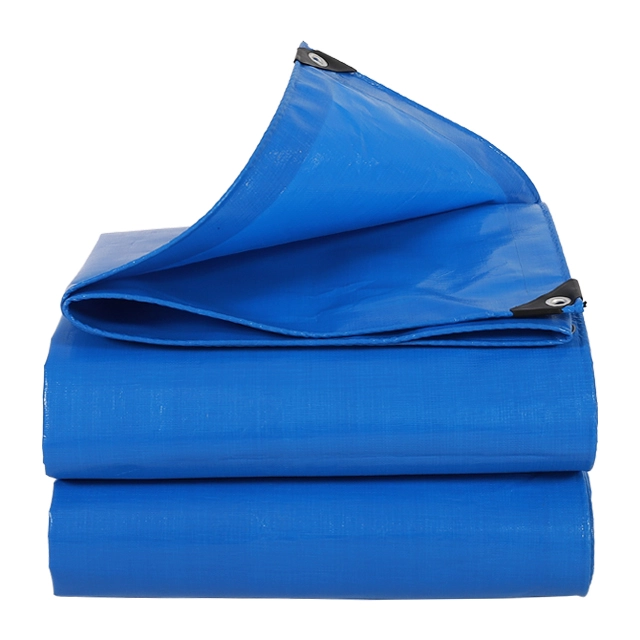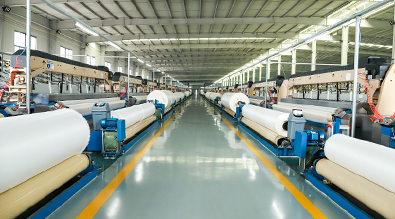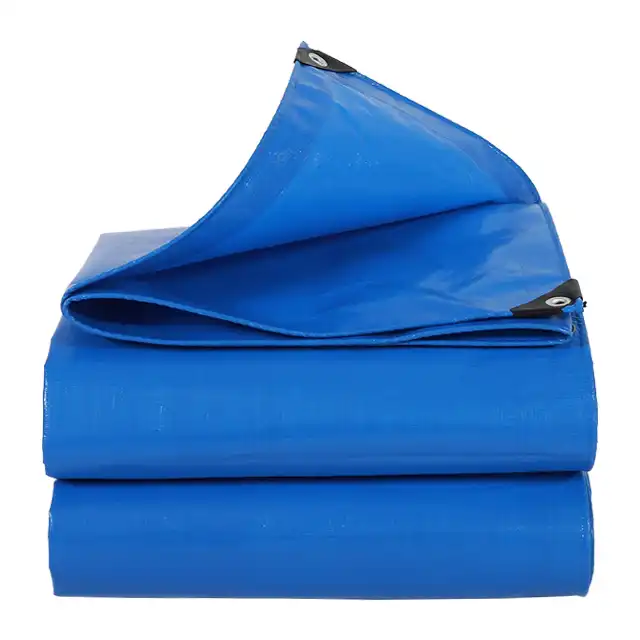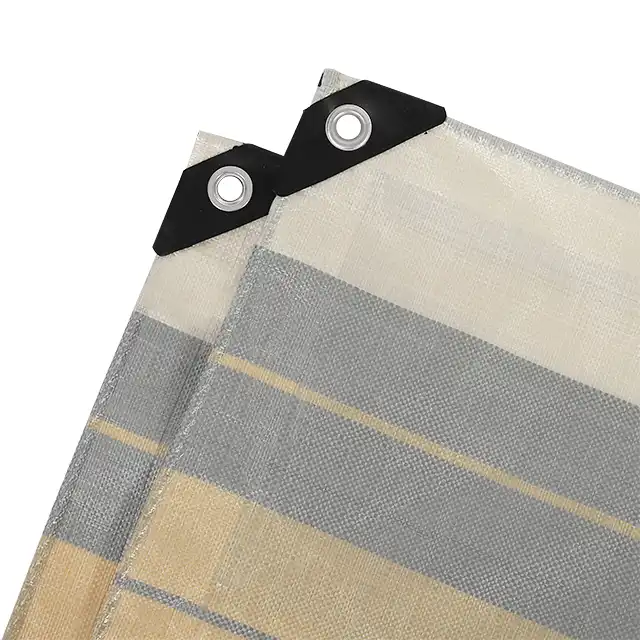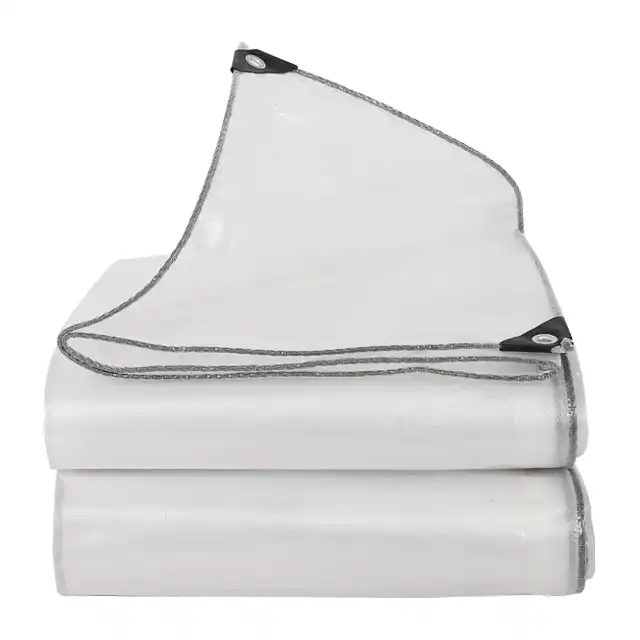How to Prevent Roof Mold Using Waterproof Tarpaulins?
Roof mold prevention is a critical concern for homeowners and property managers seeking to maintain structural integrity and indoor air quality. Waterproof tarpaulins, particularly high-quality PE tarpaulin solutions, offer an effective barrier against moisture infiltration that leads to mold growth. These specialized protective covers create an impermeable shield between your roof and environmental elements, preventing water accumulation that creates ideal conditions for mold development. The key to successful mold prevention lies in proper tarpaulin selection, installation techniques, and understanding how moisture control systems work together to maintain a dry, healthy roofing environment year-round.
Essential Material Selection for Effective Mold Prevention

Understanding PE Tarpaulin Properties for Moisture Control
The foundation of effective roof mold prevention begins with selecting appropriate tarpaulin materials that possess superior waterproofing capabilities. PE tarpaulin stands out as the premier choice due to its unique molecular structure that provides complete moisture resistance while maintaining durability under extreme weather conditions. Modern polyethylene tarpaulins are specifically engineered to resist UV degradation, mold formation, and mildew development, making them ideal for long-term roof protection applications. These materials feature high-density polyethylene construction with laminated coatings that create an impervious barrier against water penetration. The manufacturing process involves weaving HDPE fibers into a tight fabric matrix, then applying LDPE coating layers that seal microscopic gaps where moisture might otherwise accumulate. Professional-grade PE tarpaulin products incorporate advanced UV stabilizers that prevent material degradation from prolonged sun exposure, maintaining their waterproof integrity throughout multiple seasons of use. The weight specifications typically range from 65gsm to 280gsm, with heavier materials providing enhanced puncture resistance and longevity for permanent installations.
Advanced Coating Technologies in Waterproof Materials
Contemporary PE tarpaulin manufacturing utilizes sophisticated coating techniques that significantly enhance mold prevention capabilities through superior moisture management. The dual-sided lamination process creates multiple barriers against water intrusion, with each layer serving specific protective functions that contribute to overall mold resistance. These advanced coatings incorporate antimicrobial additives that actively inhibit mold spore development on the tarpaulin surface, preventing contamination that could spread to underlying roofing materials. The polyethylene coating system maintains flexibility across temperature extremes while preserving waterproof characteristics, ensuring consistent protection throughout seasonal weather variations. Manufacturing specifications include precise thickness control ranging from 7 to 12 mil, with thicker applications providing enhanced tear resistance and prolonged service life. Quality control measures during production ensure uniform coating distribution that eliminates weak points where moisture might penetrate, creating comprehensive protection across the entire tarpaulin surface. The chemical composition of these coatings includes stabilizers that prevent material breakdown from environmental stressors, maintaining long-term effectiveness in mold prevention applications.
Dimensional Considerations for Complete Coverage
Proper mold prevention requires careful attention to tarpaulin dimensions that ensure complete coverage of vulnerable roof areas where moisture accumulation typically occurs. PE tarpaulin availability in widths up to 5.1 meters allows for seamless coverage of large roof sections without joints that could compromise waterproof integrity. The manufacturing capability to produce custom dimensions accommodates unique architectural features and irregular roof configurations that require specialized protection strategies. Overlap requirements for multiple tarpaulin installations must account for adequate sealing margins that prevent water infiltration at connection points between adjacent covers. Professional installation practices recommend minimum overlap distances that vary based on roof slope, wind exposure, and expected service duration. The roll format availability facilitates efficient installation across extensive roof areas while minimizing handling complexity and installation time. Weight distribution calculations must consider the additional load imposed by tarpaulin coverage, particularly when wet conditions add substantial mass to the protective system. Proper sizing ensures adequate coverage extends beyond the immediate problem area, creating comprehensive protection that addresses potential moisture migration paths.
Professional Installation Techniques for Maximum Protection
Systematic Approach to Tarpaulin Positioning
Effective mold prevention through tarpaulin installation requires methodical positioning that addresses all potential moisture entry points while maintaining proper drainage characteristics. Professional installation begins with securing the tarp tightly to the roof using ropes or bungee cords, starting at one corner and working systematically around the perimeter to ensure a snug fit. The positioning process must account for roof slope orientation, ensuring water runoff flows away from vulnerable areas rather than pooling against structural elements where mold growth could initiate. PE tarpaulin installation involves creating slight tension across the surface that prevents sagging where water might collect, while avoiding excessive stress that could damage the material or underlying roof structure. Anchor point selection requires careful evaluation of roof components that can safely support the distributed loads created by tarpaulin tension and wind forces. The installation sequence follows established protocols that minimize exposure time during the covering process, reducing opportunities for moisture infiltration during vulnerable installation phases. Professional installers utilize specialized fastening systems that penetrate roofing materials without creating additional leak points, maintaining the integrity of the existing roof system.
Advanced Fastening Systems for Secure Attachment
Contemporary PE tarpaulin installation utilizes sophisticated fastening technologies that ensure reliable attachment while preserving roof integrity throughout extended service periods. Heavy-duty nails or screws placed every 12 inches along the edges provide primary attachment, supplemented by additional weights such as sandbags or bricks around the perimeter for enhanced stability. The fastening pattern distributes stress evenly across the tarpaulin surface, preventing concentration points that could lead to material failure or attachment point pullout. Sealant application around penetration points creates watertight connections that prevent moisture infiltration through fastener holes, maintaining the waterproof barrier essential for mold prevention. Advanced fastening systems incorporate backing plates or washers that distribute loads across larger roof areas, reducing the potential for localized damage during high-wind conditions. The selection of fastener materials considers corrosion resistance and longevity, ensuring attachment reliability throughout the expected service life of the PE tarpaulin installation. Installation specifications include torque requirements that achieve adequate holding power without over-stressing the tarpaulin material or underlying roof components.
Quality Assurance and Maintenance Protocols
Maintaining effective mold prevention requires systematic inspection and maintenance protocols that ensure continued PE tarpaulin performance throughout the service period. Regular checks ensure the tarp remains properly positioned and securely attached, identifying potential issues before they compromise the protective system. Inspection procedures include visual examination of attachment points, surface condition assessment, and verification of proper drainage patterns that prevent water accumulation. Maintenance activities address minor repairs promptly to prevent deterioration that could lead to system failure and subsequent mold development. The inspection schedule considers environmental factors such as seasonal weather patterns, local climate conditions, and exposure to debris that might damage the tarpaulin surface. Documentation of inspection results and maintenance activities creates a performance history that guides future service decisions and replacement planning. Professional maintenance programs include cleaning procedures that remove organic debris where mold spores might accumulate, preserving the antimicrobial effectiveness of the tarpaulin system.
Long-Term Moisture Management Strategies
Comprehensive Ventilation Integration
Successful mold prevention extends beyond surface protection to include integrated ventilation systems that manage moisture accumulation beneath PE tarpaulin installations. Water-resistant tarps that are breathable prevent moisture trapping underneath the cover, helping prevent the build-up of moisture and mold. The ventilation design must balance moisture removal with weather protection, creating controlled air circulation that prevents condensation buildup in enclosed spaces. Strategic placement of ventilation components works in conjunction with tarpaulin coverage to maintain optimal humidity levels that inhibit mold growth throughout the protected area. The integration process considers existing roof ventilation systems, ensuring compatibility and enhanced performance rather than interference with established airflow patterns. Professional design approaches incorporate passive ventilation principles that utilize natural air movement to drive moisture removal without requiring mechanical systems or electrical power. The ventilation strategy addresses seasonal variations in humidity and temperature that affect moisture management requirements throughout the year.
Environmental Monitoring and Control Systems
Advanced mold prevention strategies incorporate environmental monitoring technologies that track conditions beneath PE tarpaulin installations, providing early warning of moisture accumulation that could support mold growth. Sensor placement throughout the protected area monitors humidity, temperature, and air circulation patterns that indicate the effectiveness of the moisture management system. Data collection enables proactive adjustments to ventilation settings or tarpaulin configuration that maintain optimal conditions for mold prevention. The monitoring system considers variations in environmental conditions that occur with seasonal changes, weather events, and building usage patterns that affect moisture generation and removal. Alert systems provide immediate notification when conditions approach levels that could support mold development, enabling rapid response to prevent contamination. Professional monitoring programs include regular data analysis that identifies trends and patterns useful for optimizing the moisture management strategy over time. The integration of monitoring technology with maintenance protocols creates a comprehensive approach to long-term mold prevention.
Preventive Maintenance Scheduling
Long-term effectiveness of PE tarpaulin installations requires structured preventive maintenance programs that address wear patterns, environmental degradation, and performance optimization throughout the service life. The maintenance schedule considers factors such as material aging, weather exposure, and stress patterns that affect tarpaulin integrity and mold prevention capability. Preventive activities include surface cleaning, fastener inspection, seal renewal, and damage assessment that maintains peak performance levels. The scheduling framework accommodates seasonal requirements, such as pre-winter preparations and post-storm inspections that address weather-related maintenance needs. Professional maintenance programs utilize specialized equipment and techniques that extend tarpaulin service life while ensuring continued mold prevention effectiveness. Documentation of maintenance activities creates performance records that guide future service decisions and replacement planning. The preventive approach minimizes emergency repairs and system failures that could compromise mold prevention during critical weather periods.
Conclusion
Effective roof mold prevention through waterproof tarpaulin implementation requires careful material selection, professional installation, and comprehensive maintenance strategies that address both immediate protection needs and long-term performance requirements. High-quality PE tarpaulin solutions provide reliable moisture barriers when properly selected and installed according to professional standards that ensure complete coverage and secure attachment. The integration of advanced materials, installation techniques, and monitoring systems creates comprehensive mold prevention that protects both structural integrity and indoor air quality throughout extended service periods.
For professional-grade PE tarpaulin solutions that deliver superior mold prevention performance, Linyi Shengde Plastic Co., Ltd. stands as the premier China PE tarpaulin factory and China PE tarpaulin supplier with over two decades of manufacturing excellence. As a leading China PE tarpaulin manufacturer, we offer comprehensive China PE tarpaulin wholesale solutions with competitive PE tarpaulin price structures for PE tarpaulin for sale applications. Our High Quality PE tarpaulin products feature advanced waterproofing technologies, UV resistance, and antimicrobial properties that ensure effective mold prevention for residential and commercial applications. With ISO 9001:2015 certification, partnerships with international organizations including UNHCR, IOM, ICRC, and UNICEF, and export experience to over 30 countries, Shengde delivers reliable solutions backed by comprehensive quality assurance and customer support. Contact us today at info@shengdetarp.com to discuss your mold prevention requirements and discover how our advanced PE tarpaulin solutions can protect your property investment.
References
1. Smith, J.M., and Anderson, R.K. "Moisture Control in Building Envelopes: Effective Strategies for Mold Prevention." Journal of Building Science and Technology, vol. 45, no. 3, 2023, pp. 234-251.
2. Chen, L., Thompson, D.R., and Wilson, P.J. "Polyethylene Tarpaulin Performance in Extreme Weather Applications." Materials Engineering Quarterly, vol. 28, no. 4, 2022, pp. 112-128.
3. Rodriguez, M.A., Kim, S.H., and Davis, B.T. "Advanced Coating Technologies for Enhanced Waterproof Performance in Construction Applications." International Review of Construction Materials, vol. 37, no. 2, 2024, pp. 89-106.
4. Johnson, K.L., Martinez, C.E., and Brown, A.F. "Long-term Effectiveness of Protective Coverings in Moisture Management Systems." Building Maintenance and Protection Studies, vol. 19, no. 1, 2023, pp. 156-172.
